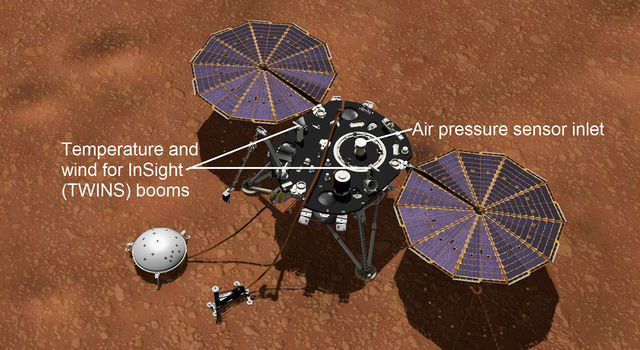
Good news if you’re planning a trip to Mars — you can now check a daily weather report on the planet, thanks to NASA’s Insight lander. The lander uses a set of sensors called the Auxiliary Payload Subsystem (APSS) to monitor the temperature, wind, and air pressure that it experiences every day and then sends this information back to Earth where it is shared on NASA’s website.
InSight will hopefully be collecting this data for the next two years so researchers can compare weather changes between seasons as well as between days. Weather information is important for researchers as it lets them allow for noise in the data they are collecting on quakes inside the planet using InSight’s seismometer. The seismometer is sensitive to changes in air pressure and wind, so the researchers need to allow for these changes when analyzing their data.
For the rest of us, staying up to date on the Martian weather is simply good fun. “It gives you the sense of visiting an alien place,” Don Banfield, leader of InSight’s weather science team said in a statement. “Mars has familiar atmospheric phenomena that are still quite different than those on Earth.”
The weather on Mars has been even colder than here on Earth in the past few weeks, ranging from 4 – 11°F at maximum to a bracing -138 to -140°F minimum. That’s colder than the coldest temperature ever recorded on Earth at Vostok Station, Antarctica, on 21 July, 1983. The wind has been blowing up a storm on Mars as well, reaching a maximum speed of 38 miles per hour which qualifies as gale force winds. For a visual representation of the weather, you can see 3-day Martian weather reports from recent data collected by InSight:

The Mars Weather website will be regularly updated by NASA so you can keep an eye on the conditions on our favorite red planet.



